
Having visited the HKTDC exhibition, I ignored an interesting, as it seemed to me then, theme - assembling LiFePO4 elements in the form factor of the usual 7 or 9 Ah lead-acid battery.
Imagine only throwing away the old battery from the UPS, replacing it with lithium happiness and solid profit. And to you, the “eternal primus”, and in the cold, the capacity does not lose so much, and when charging it can take large and large currents, and it can also give a lot at once. Well, in general, a fairy tale.
Its cool! I thought and ordered samples for more thorough study.
I waited very long and tedious, but lithium, if you are not lucky, danger, etc.
Then it came to an understanding that something had to be tested, the electronic load from ZKE Tech EBD-A20H was also ordered in Ali, and then it was also understood that the batteries need to be charged, but as evil, the car charger was lying for a long time on the mezzanine at trial switching-on, it emitted a caustic cloud of smoke and completely refused to continue functioning. I had to break the brain myself and colleagues, and after some time I got a very advanced charging Bosch C7. Well, it's all the lyrics, now the most interesting.
The test subjects turned out to be a lead-acid battery from a Leoch DJW12-9.0 bespereboynik that died after its death, and the culprit of this note is LFeLi-1207MS.
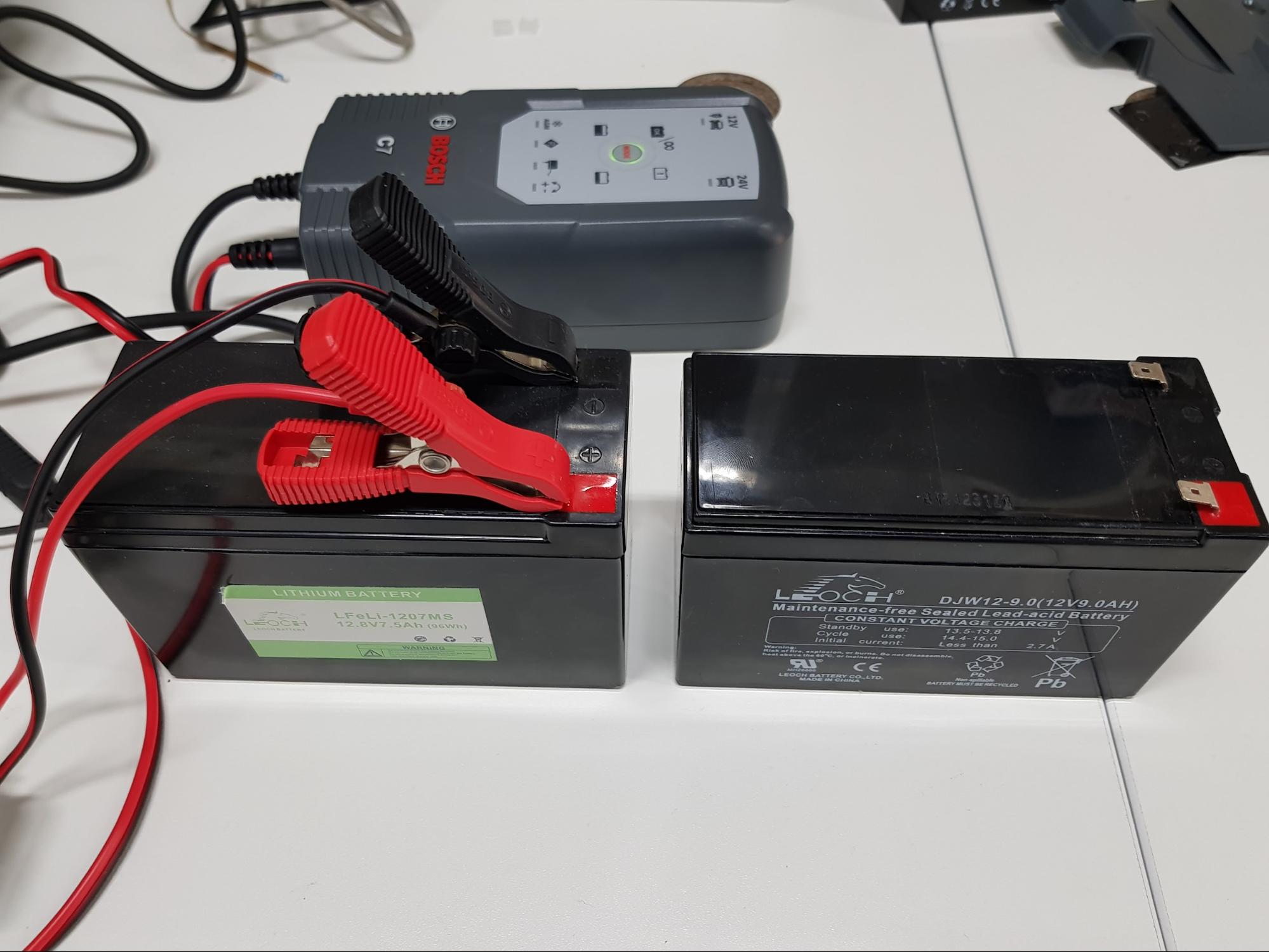 Batteries before start
Batteries before startThe most obvious thing when you take two different batteries in your hand is their weight! Well this is what an advantage, hoo!
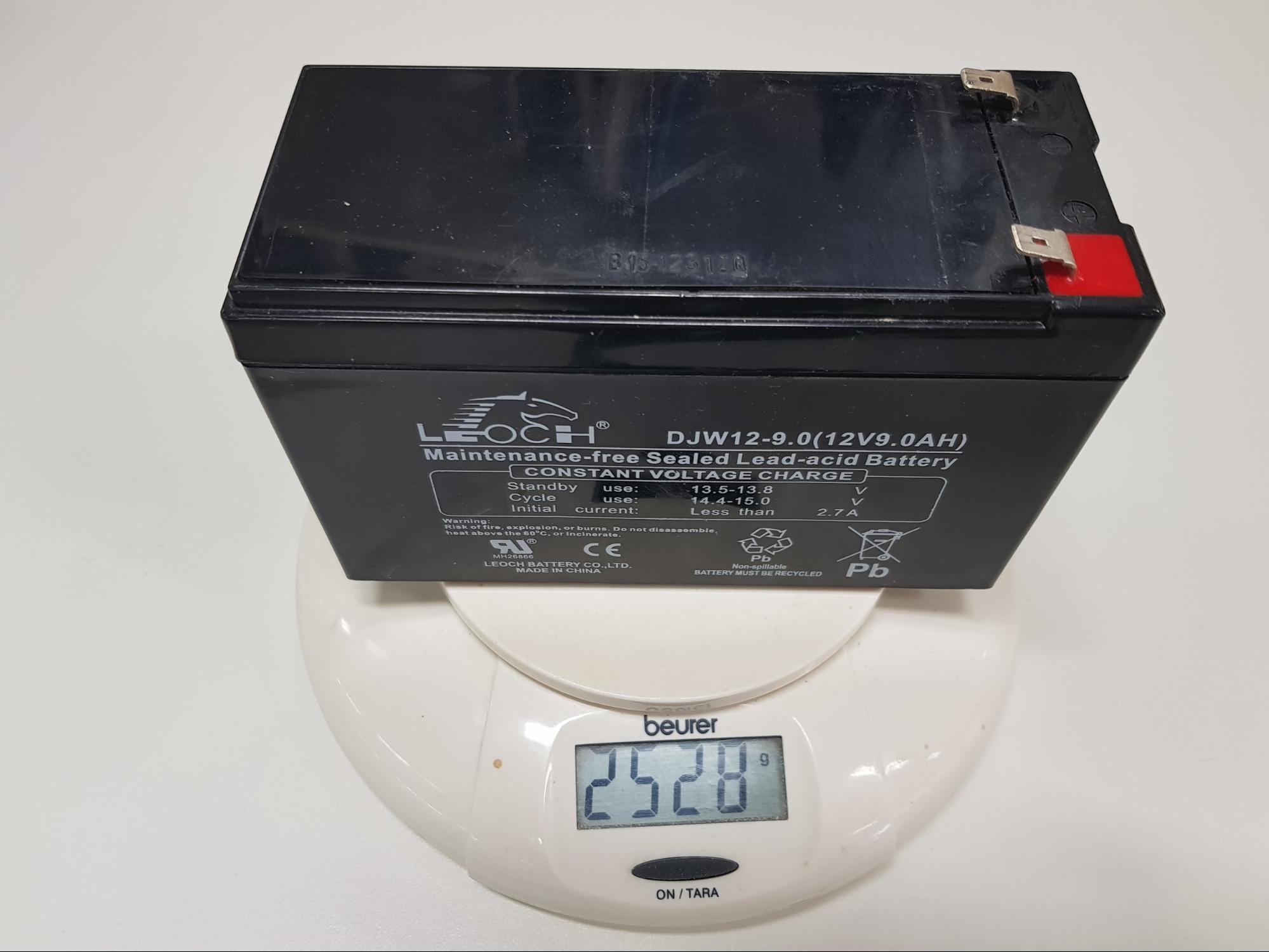
And, straight, powder with rare inclusions Tesla inside
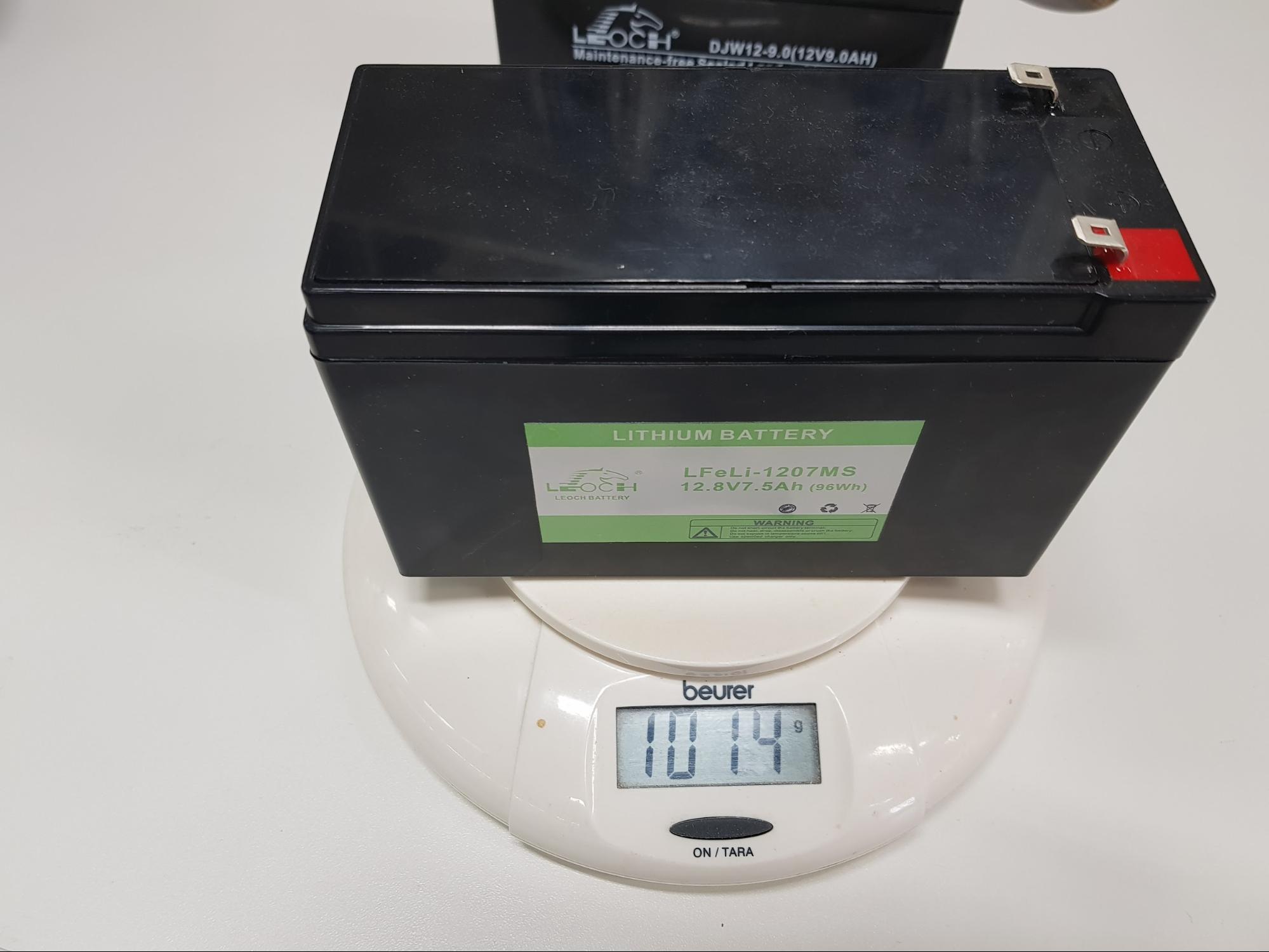
Two and a half times the difference!
Well, as without a dismemberment, eh? No sooner said than done! Lead-acid gut did not, it was too much she promised dirt on the desktop.

20 elements 18650 without any identification marks
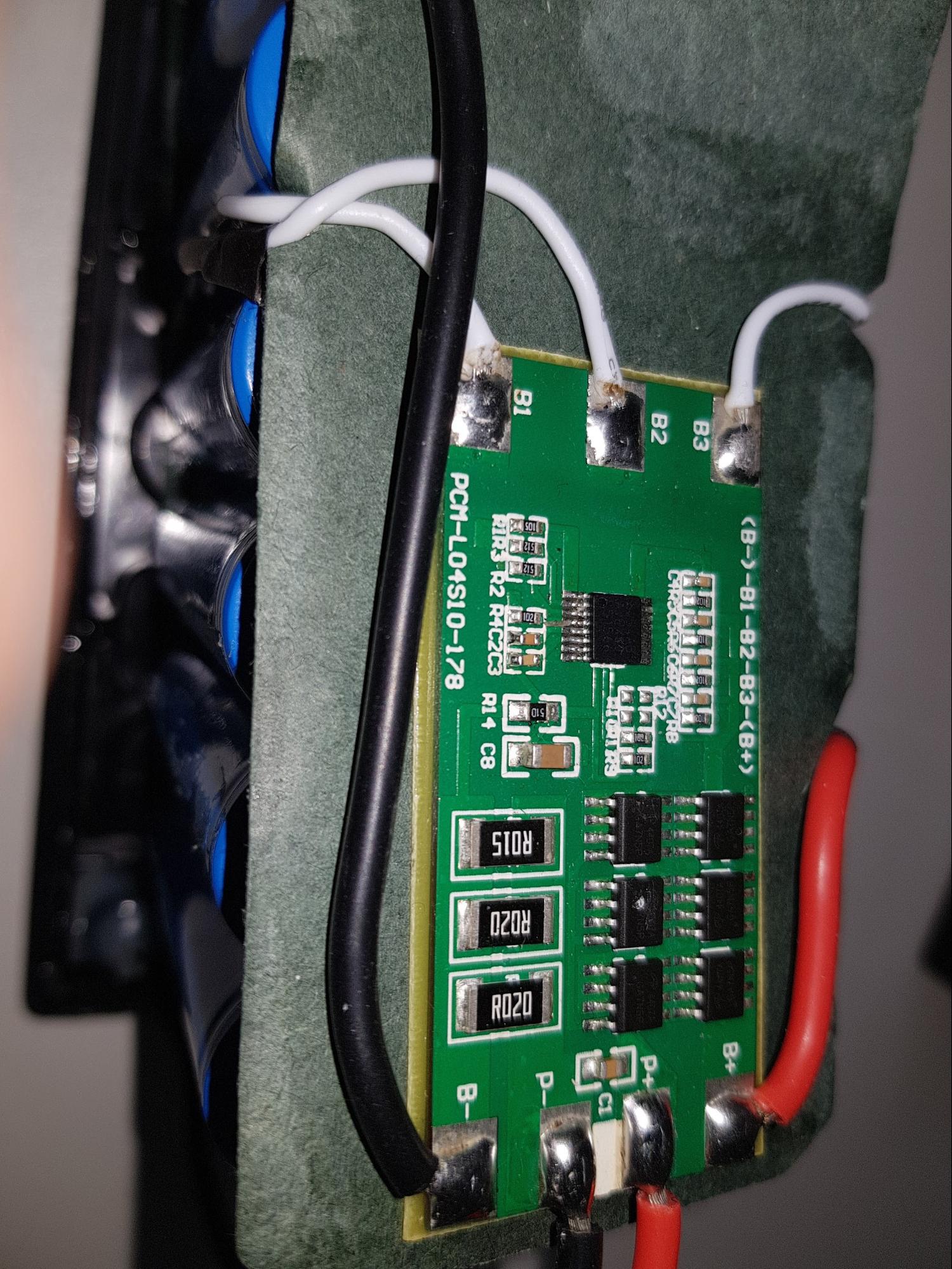 Simple BMS 4S10
Simple BMS 4S10Let's proceed to the experiment

I tried this way and that, defeated with different currents and decided to set everything to the maximum on the load - the current was 20A and went.
Lead

Not impressive, right!? Here you can justify a little battery, since it was initially tired, but not the essence, there is a certain discharge schedule and it is repeated from discharge to discharge. The current increases because the maximum load can only 200W, and the voltage at the battery terminals started from 13V.
After more than 14 minutes, the load was turned off, the battery stood calmly, even without heating up (this is very important).
Well, now the most delicious
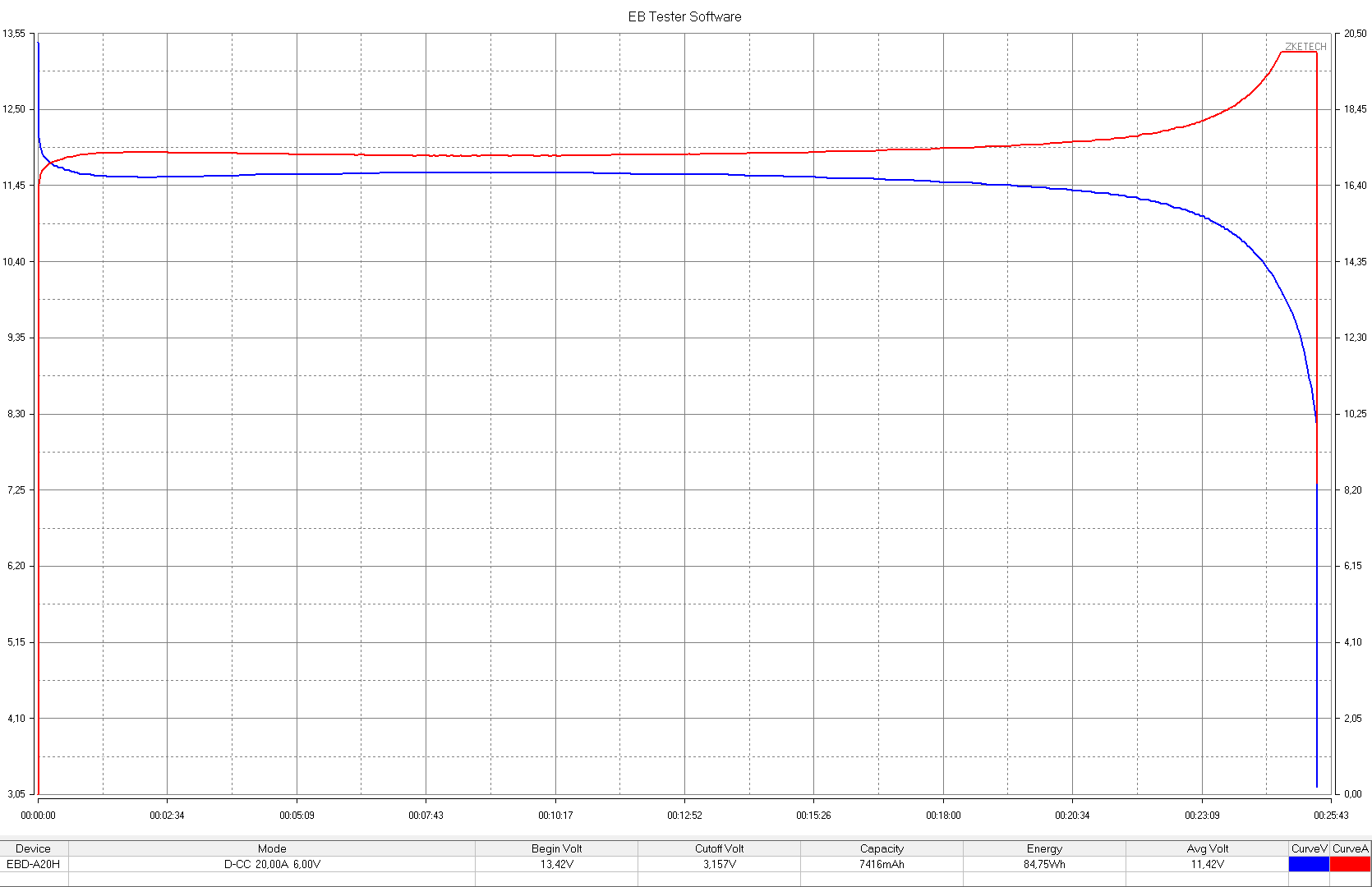
Cool?
Power is given by the battery evenly (11.5V and 17.3A), the capacity at discharge by different currents from low to maximum (20A) hardly fluctuates and remains equal to the declared 7.5 Ah.
Well, I'll try to summarize:
The first negative point is the price. Of course, this was expected, but still there is a difference of 2 times. At the time of this writing, the cost of the lead battery was about 1300r, the lithium brother in China was worth about $ 37 at the time of purchase, in Russia it would cost about $ 45-50 per piece.
During the testing periodically I contacted the seller and found out another unpleasant moment, this is that the batteries can not be turned on either in series or in parallel. Thus, direct replacement of lead with lithium is possible only in the UPS, where one 12V battery was initially installed.
Having carefully studied the datasheet, I subtracted another nuisance, the maximum current that a lithium acb can deliver to only 7A, the seller assured that everything is 10A.
But damn it, 7 * 12 is some kind of 84W, and yet the efficiency of the inverter, which in cheap UPSs with one battery barely reaches 0.7, and we get a very limited solution in terms of the capacity of the connected load. While the lead sample can give as much as 120A over the datasheet for 5s, it did not check, there is nothing.
Curiosity brought the seller to white heat, but the information received, the cost of the battery, which can give 40A without consequences. The price tag pleased us - $ 60, if translated into rubles with deliveries and other expenses, we get a price tag rushing to 5000 rubles.
Well, the scare stories about the tesla, which the bombana imposes on its own, really was very scary to test the lithium battery with current up to 20A, it warmed up to the state no longer tolerated, despite the fact that it was not in close UPS, where the inverter itself was easily up to 70 degrees heats up.
Conclusion: The use of lithium batteries is very limited by design features, you need to order specialized assemblies for each specific case, and replacing 1 to 1 will not work. Lithium batteries cannot be charged at low temperatures. It is necessary to carefully choose the assembly, since the tested assembly did not react at all to the current of 20A, although at 10A it had to go out, the heating of the elements of the assembly is also scary, I also feel guilty about BMS. Yes, you can read lithium batteries marketing for as long as you like, which is cool, powerful and technologically advanced. But do not forget to read carefully about the features of use, and multiplying all this on the price tag can be summarized - yes well, it ... not in this life ...